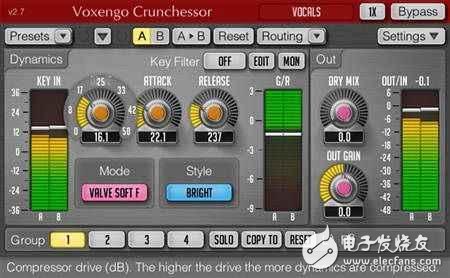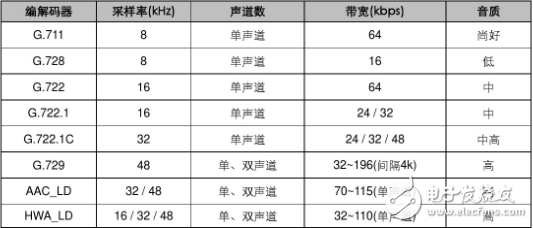
Audio signals can be compressed based on audio compression technology.
Audio compression technology refers to the use of appropriate digital signal processing techniques for the original digital audio signal stream (PCM encoding) to reduce (compress) its code rate without loss of useful information or negligible loss. It is called compression coding. It must have a corresponding inverse transform called decompression or decoding. Audio signals may introduce a large amount of noise and certain distortion after passing through a codec system.
In the field of audio compression, there are two compression methods, lossy compression and lossless compression. Commonly known MP3, WMA, and OGG are called lossy compression. As the name implies, lossy compression reduces the audio sampling frequency and bit rate, and the output audio file will be smaller than the original file. Another type of audio compression is called lossless compression, which is the subject matter to be said. Lossless compression can compress the volume of the audio file less than 100% of all the data of the original file, and restore the compressed audio file to achieve the same size and the same code rate as the source file. The lossless compression formats are APE, FLAC, WavPack, LPAC, WMALossless, AppleLossless, La, OpTImFROG, Shorten, and the common, mainstream lossless compression formats are APE and FLAC.
Audio compression technology standard
Audio signals are an important part of multimedia information. Audio signals can be divided into telephone quality language, AM broadcast quality audio signals and high-fidelity stereo signals (such as FM broadcast signals, laser disc sound signals, etc.). Digital audio compression technology standards are divided into telephone voice compression, AM broadcast voice compression and 3 kinds of wideband audio compression for FM radio and cd sound quality.
In the field of speech coding technology, various manufacturers are vigorously developing and promoting their own coding technology, which makes the coding technology products in the field of speech coding a wide variety and poor compatibility, and the technology of each manufacturer is difficult to be promoted as soon as possible. Therefore, it is necessary to integrate existing coding technologies and develop a global unified language coding standard. Since the 1970s, ccett's fifteenth research group and the International Organization for Standardization (ISO) have successively launched a series of speech coding technology standards. Among them, ccitt launched the g series standard, while iso introduced the h series standard.
1. The telephone (200hz-3.4khz) voice compression standard mainly includes itu g.722 (64kb/s), g721 (32kb/s), g.728 (16kb/s) and g.729 (8kb/s). Recommended for digital telephone communication.
2, AM broadcast (50hz-7khz) voice compression standard mainly uses itu g.722 (64kb / s) recommendations for high-quality voice, music, audio conferencing and video conferencing.
3, FM radio (20hz-15khz) and cd sound quality (20hz-20khz) broadband audio compression standard mainly uses mpeg-1 or mpeg-2 double Dolby ac-3 and other recommendations for cd, md, mpc, vcd, Dvd, hdtv and movie dubbing.
The following mainly introduces g.722 (64kb/s) and mpeg-4
G722 audio compression coding standard
G.722 is a multi-frequency speech coding algorithm that supports bit rates of 64, 56 and 48 kbps. In G.722, the sampling rate of the speech signal is 16,000 samples per second. Compared to 3.6 kHz frequency speech coding, G.722 can handle audio signals up to 7 kHz wide. The G.722 encoder is based on the principle of subband adaptive differential pulse coding (SB-ADPCM). The signal is divided into two subbands and the samples of the two subbands are encoded using ADPCM techniques.
G.722 is a wideband encoding method in the G series of speech coding. Compared with G.711, the sampling frequency is extended from 8KHZ to 16KHZ. The speech quality is improved. The signal is divided into two sub-bands (high frequency, low frequency). The signals in each sub-band are encoded by ADPCM (adapTIve differenTIal pulse code modulaTIon). In the calculation of the last bit rate, only the low frequency part is allocated to the more resources 8Kbps X 6bit, and the high frequency part is allocated to less resources (mostly friction sound, noise, etc.) Auxiliary sound) 8Kbps X 2bit, the sum of the two is 64Kbps, so G.722 is 64kbps with respect to G.711 bit rate, but the voice quality is improved. G.722 encoding is supported in cisco CM7.0 or later. Algorithm, cisco 79 and above series switches have G.722 encoding as the default preferred encoding.
MPEG-4 audio compression coding standard
Highly flexible and scalable. Mainly serves multimedia communication at low bit rates. Introduced audio object (Aâ—‹)
Rate range: 2~64kb/s, providing three types of encoders 1 low bit rate: parameterized encoder
Parameter Encoder: Use parametric coding techniques.
Two coding tools: harmonic vector excitation coding, harmonics and feature line plus noise coding.
2 intermediate bit rate: code excited linear predictive encoder
Code excited linear predictive coder: mainly composed of excitation source and synthesis filter
   3 high bit rate: time / frequency encoder
Time/frequency encoder: time domain module extracts gain information of audio signal
Filter bank transforms from time domain to frequency domain by DCT transform signal
The psychoacoustic model adopts corresponding processing strategies for frequency domain signals in different frequency bands.
The frequency domain processing module processes the signals of the respective frequency bands according to the parameters of the psychoacoustic module.
The quantization and coding section encodes the frequency domain signal.
Turntable And Motor For Display Stands
Turntable and Motor for Display stands
Rotating Turntable Display Stand with LED,POP Display Wobbler for Supermarket,360 Degree Rotating Display
AST Industry Co.,LTD , https://www.astsoundchip.com